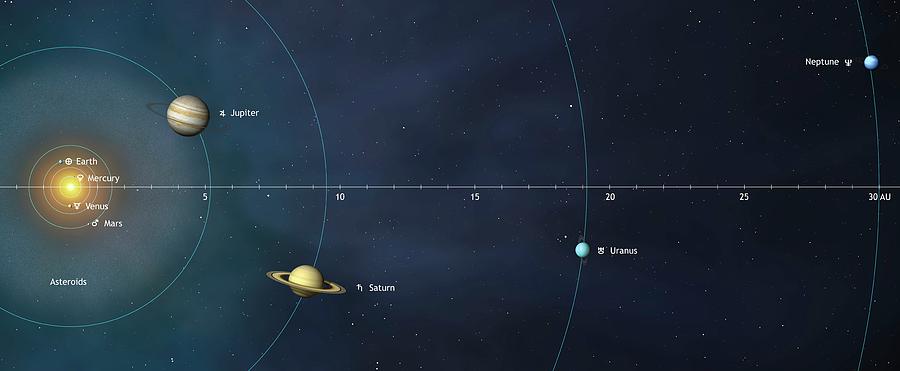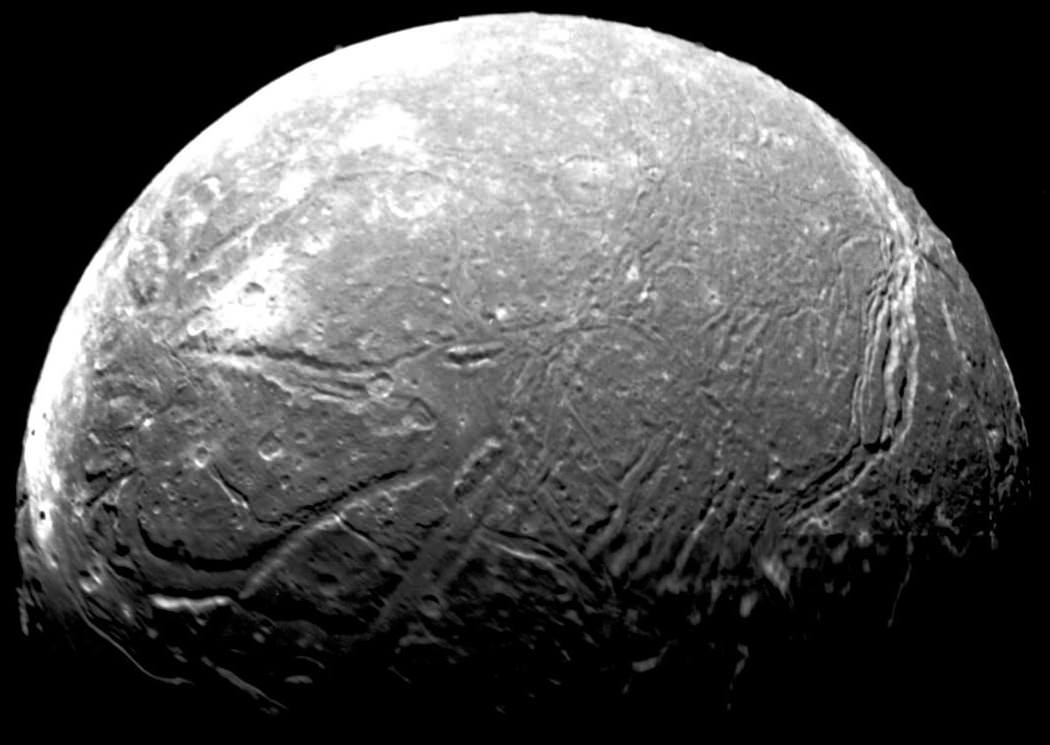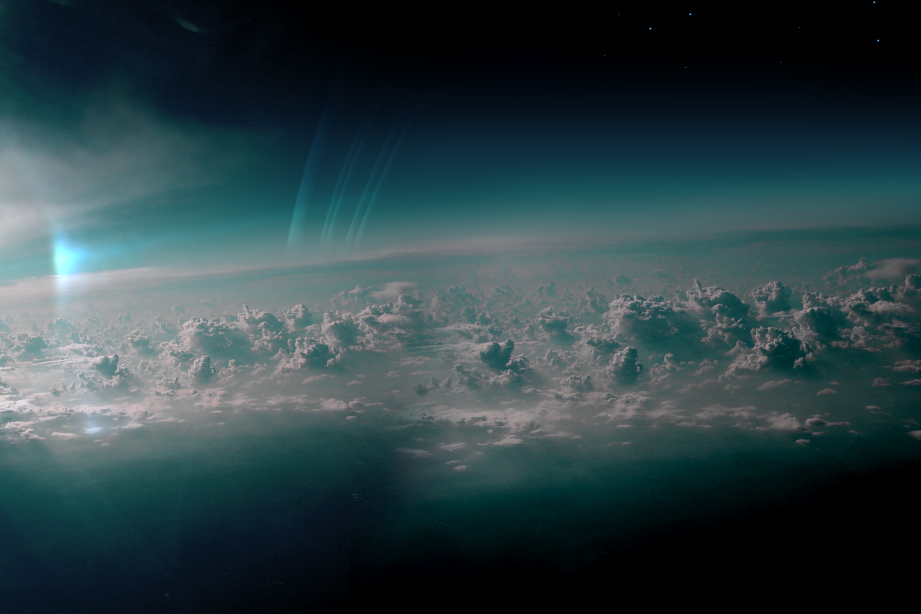Solar system neptune
Data: 3.09.2018 / Rating: 4.6 / Views: 690Gallery of Video:
Gallery of Images:
Solar system neptune
The Solar System is the Sun and all the objects that orbit around it. The Sun is orbited by planets, asteroids, comets and other things. 9 percent of the Solar System's mass. Neptune; Solar System portal Star portal: The Solar System is the gravitationally bound system of the Sun and the objects that orbit it, either directly or indirectly, including the eight planets and five dwarf planets as defined by the International Astronomical Union (IAU). Nine Planets Solar System Tour. This website is an overview of the history, mythology and current scientific knowledge of the planets, moons and other objects in our solar system. Nereid is the outermost of Neptunes moons, and the third largest. This moon, discovered in 1949 by Kuiper, has a strangely shaped orbit. It orbits Neptune in a long skinny oval, not in a short fat oval like the other planets and moons of the Solar System. Neptune, the outermost planet in the Solar System, cannot be seen from Earth without a telescope or binoculars. It is covered by icy, bright blue methane clouds that whip around the globe at. Neptune is the eighth planet from the sun at a distance of about 4. Contents[show Orbit One day on Neptune takes about 16 hours (the time it takes for Neptune to rotate or spin once). Neptune makes a complete orbit around the sun (a year in Neptunian Suppose you wanted to build a scale model of our solar system so that the orbit of Neptune was located 10 feet from the yellow ball that represents the sun. Our solar system consists of an average star we call the Sun, the planets Mercury, Venus, Earth, Mars, Jupiter, Saturn, Uranus, Neptune, and Pluto. It includes: the satellites of the planets; numerous comets, asteroids, and meteoroids; and the interplanetary medium. First moon outside the solar system could be as big as Neptune. With help from the Hubble Space Telescope, astronomers say they have found compelling. And what can we learn from these space rocks in our solar system? Make a mask and pretend to be your favorite planet in our solar system! The coldest planet in our solar system. The planet that spins on its side. Neptunes winds travel at more than 1, 500 mph, and are the fastest planetary winds in the solar system. Credit: NASAJPL Neptune is the eighth planet from the sun. In the darkest and coldest parts of its polar regions, a team of scientists has directly observed definitive evidence of water ice on the Moons surface. Neptune, third most massive planet of the solar system and the eighth and outermost planet from the Sun. Because of its great distance from Earth, it cannot be seen with the unaided eye. With a small telescope, it appears as a tiny, faint bluegreen disk. The Solar System was formed approximately 4. 6 billion years ago and consists of the Sun, planets, dwarf planets and other astronomical objects bound in its orbit. The formation was cause by the collapse of a giant molecular cloud, the mass at the centre collecting. Neptune is the eighth planet from the Sun making it the most distant in the solar system. This gas giant planet may have formed much closer to the Sun in early solar system history before migrating to its present position. Neptune Planet Profile 1983: Pioneer 10 crosses the orbit of Neptune and becomes the first humanmade object to travel beyond the orbits of the planets of our solar system. The spacecraft remains on a trajectory heading towards the red star Aldebaran (in the constellation Taurus) and is expected to pass by it in about 2, 000, 000 years. Neptune is the second coldest planet in the Solar System after Uranus, and the furthest from the Sun. Methane gas in its upper atmosphere makes it look blue in colour. At the top of its cloud layers, the temperature is usually a freezing 201C (330F), though it can get even colder. Neptune is the eight planet from our Sun, one of the four gas giants, and one of the four outer planets in our Solar System. Since the demotion of Pluto by the IAU to the status of a dwarf. Neptune is a planet in the solar system and is the 8th closest planet to the Sun, which actually makes the planet the furthest planet from the sun. The distance from the sun to Neptune is over 2, 795 million miles. Neptune is one of the four planets in the solar system that is a gas planet. Neptune is the eighth planet form the Sun. It wasn't discovered until 1846. It wasn't discovered until 1846. It wasn't even actually seen with a telescope for several years after that. The Kuiper Belt is a diskshaped region past the orbit of Neptune, roughly 4, 400, 000, 000 to 14, 900, 000, 000 km (30 to 100 AU) from the Sun, that consists mainly of small bodies which are the remnants from the Solar System's formation. Because Neptunes axial tilt (28. 32) is similar to that of Earth (23) and Mars (25), the planet experiences similar seasonal changes. Neptune is the farthest of the eight planets from the Sun and is the fourth largest, with a diameter of kilometers (3. It is one of the four gas giants. If Neptune had a solid surface and you stood on it, you would weigh 12 more than you do on Earth. solar system Artist's conception of a young version of the solar system depicting the dusty disks thought to be the breeding grounds of planets. NASAJPL This configuration, commonly referred to as the solar nebula, resembles the shape of a typical spiral galaxy on a much reduced scale. Learn more about the eighth planet in our solar system. The eighth planet from the sun, Neptune was the first planet located through mathematical predictions rather than through regular. Neptune is the smallest Gas Giant in our Solar System. Neptune is not visible to the naked eye. Neptune is named after the Roman God of the seas, because of Neptune's blue color. Neptune is the outermost planet of the gas giants. It has an equatorial diameter of km. If Neptune were hollow, it could contain nearly 60 Earths. Neptune orbits the Sun every 165 years. Our solar system is a vast place, with lots of mostly empty space between planets. But out there are comets, asteroids and more rocky, frozen objects (including dwarf planets) yet to be discovered. Watch videoCircumstantial evidence continues to accumulate for the existence of Planet Nine, the hypothetical body thought to be lurking in our solar system far. Neptune is the second coldest planet in the Solar System after Uranus, and the furthest from the Sun. Methane gas in its upper atmosphere makes it look blue in color. At the top of its cloud layers, the temperature is usually a freezing 330F (201C), though it can get even colder. The Outer Solar System has Jupiter, Saturn, Uranus, Neptune these are sometimes called the gas giants Out past Neptune youll find the small planet of Pluto which has a solid but icier surface. Many dont class this as a planet anymore but you can read this on the Pluto page. The planets of the outer solar system are Jupiter, Saturn, Uranus, and Neptune (Pluto is now classified as a dwarf planet): The first thing to notice is that the solar system is mostly empty space. The planets are very small compared to the space between them. At times, Neptunes orbit takes it further from the Sun than any other planet in the Solar System. In 2011, Neptune will complete its first orbit around the Sun since it was discovered in 1846. Neptune is the Roman god of fresh water and the ocean. Everything you could want to know about the 8th and last planet from the Sun: Neptune. Real images taken from Voyager 2 and Hubble Space Telescope. Our Solar System Neptune is made of rock and metal in the core. The core is probably bigger than Uranus's because Neptune weighs more, but is the same size. Around the core is rock, water, ammonia and methane. The atmosphere is made of hydrogen and helium. Lower down in the atmosphere, there is methane and ammonia too. Neptune has the second largest gravity of any planet in the solar system second only to Jupiter. The orbit path of Neptune is approximately 30 astronomical units (AU) from the Sun. This means it is around 30 times the distance from the Earth to the Sun. Neptune is the eighth and farthest known planet from the Sun in the Solar System. It is the fourthlargest planet by diameter and the thirdlargest by mass. Among the giant planets in the Solar System, Neptune is the most dense. Dark, cold and whipped by supersonic winds, ice giant Neptune is the eighth and most distant planet in our solar system. More than 30 times as far from the Sun as Earth, Neptune is the only planet in our solar system not visible to the naked eye. The Planets of the Solar System This website is an easytofollow overview of the historical, scientific, cultural and mythological facts of our solar system. Topics include space facts, the planets, galaxies, black holes and other objects found in the solar system. Neptune is the third largest planet in the Solar System, much smaller than the real giants, Jupiter and Saturn, and only a little bigger than Uranus. Neptune was the most distant planet of the solar system during the Voyager 2 flyby in 1989. It is also the most distant planet today but for a different reason. Solar System Scope is a model of Solar System, Night sky and Outer Space in real time, with accurate positions of objects and lots of interesting facts. The solar system appears to have a new ninth planet. Today, two scientists announced evidence that a body nearly the size of Neptunebut as yet unseenorbits the sun every 15, 000 years. The winds on Neptune can be 9 times stronger than the wind on Earth. Sometimes, during the course of Neptune's orbit, dwarf planet Pluto is actually closer to the sun, and us, than Neptune. This is due to the unusual elliptical (egg) shape orbit of Pluto. Astronomers find first compelling evidence for a moon outside our solar system New Neptunesized exomoon candidate has been observed around a star some 8, 000 light years away than any planet in our system see My name is Neptune The 8th Planet from our burning Sun I got 6 rings Made up of dust Solar System Planets Lesson for kids Duration: 5: 31. Neptune is the eighth planet from the Sun, and the farthest planet from the Sun in the Solar System. Neptune was discovered on September 23, 1846 by three astronomers: John Couch Adams, Urbain Le Verrier, and Johann Galle.
Related Images:
- Legends 720p web s01e03
- 5 of 31
- Manual De Despiece Nissan Pathfinder
- Taz wanted no download
- Nikita s04 season 4
- La Mia Generazione
- Cd bruno mars
- Zero no tsukaima f
- Countable and uncountable sets in hindi
- The Essential Office 2000 Book
- Aid to undergraduate medicine
- 1080p telugu movies
- Fiorentina vs napoli
- OHSAS 18001 Step by Step A Practical Guide
- Big brother after dark s16e02
- Alegerea kiera cass film
- Top dance of 2018
- Formula 1 hd
- Monopoly here now edition
- Foxy di all yours
- Sg1 season 2
- Dark la eme
- Dark ocean society
- Graduation Message From Aunt To Niece
- Bagpipe tutorial pdf
- We Are Closed Labor Day Sign
- Demain est un autre jour
- Destinys child say my name
- Grand funk live
- Divinity Original Sin gog
- The Quran and the Aramaic Gospel Traditions
- The chaperone milfs
- English language and literature
- Dark carnival games
- Pdf El Poder De Tu Mente
- El show de truman
- Bruno boots this cant be happening at macdonald hall
- Computer graphics using java 2d and 3d
- Demi lovato full album
- Devil wears prada discography
- Bitdefender antivirus plus 2017 build
- Birth of a Prince
- 2001 Honda Accord Timing Marks
- Go West A Lucky Luke Adventure
- Akcent thats my name 720p
- Pre calculus mathematics for calculus
- Colonel bogey march pdf
- The fosters s01e12
- Linsey dawn mckenzie
- Quran Tajweed Pdf English
- Pinoy Movies Online Free
- Stamps of india collectors companion the weekly
- Exploited teens asi
- Halo 4 gecko
- The simpsons s3
- Safe haven 2018 soundtrack
- Coupe du monde de la FIFA
- English sub bleach
- Chores for a Whore Rikki Six
- Breaking bad 720 blu
- Man of steel
- Avast 2018 9 0
- Two steps from heaven
- Now your gone
- Maila anchal in hindi free
- The Commodores Discography
- Call of duty advanced warfare english lang
- Lalba del pianeta delle scimmie
- Welding Skills
- Most downloaded game
- Cpm Dairy Software Download
- Piet piraat en het zwaard van zilvertand












